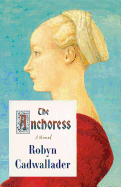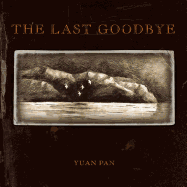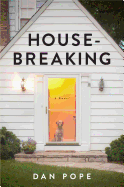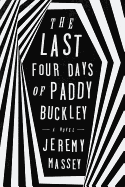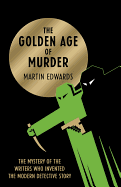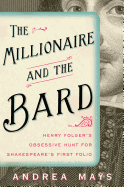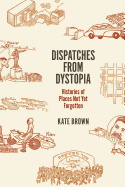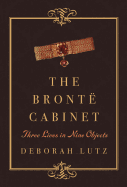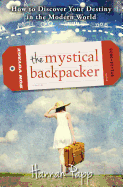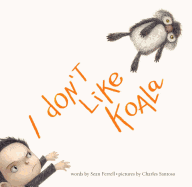Friday, May 22, 2015
We receive a slew of books at the office every day, and I receive a slew of e-mails from publicists, asking us to consider their books. When the right book hits at the right time, I start to read. That's what happened with The Mindful Athlete: Secrets to Pure Performance by George Mumford (Parallax Press). Mumford is a former student-athlete who has become a mindfulness techniques instructor--for businesses, prisons and the NBA. He's worked with Phil Jackson for more than 20 years and is currently working with Jackson's New York Knicks. Of course, I exchanged a few e-mails with the publicist about the Knicks--who wouldn't?--but as I riffled through the book I saw these names: Lionel Messi, Shaquille O'Neal, Michael Jordan and... Anne Lamott and W.H. Auden. Then I saw a section on tai chi, which I have started practicing. I'll never be able to bring an opponent to the ground, but what Mumford says about the mind-body connection resonates with what I've learned.
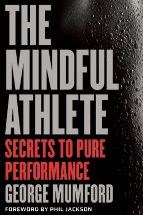
Getting "Mumfied" (as Phil Jackson calls it) is not just for the athlete; conscious flow, the spirit of love, less room in life for distraction--who couldn't use more of that? --Marilyn Dahl, editor, Shelf Awareness for Readers
The Anchoress
by Robyn Cadwallader
In her debut novel, The Anchoress, Australian writer Robyn Cadwallader tells the story of 17-year-old Sarah in 13th-century Midlands, England. Devastated by her sister's death in childbirth, Sarah chooses to devote her life to God and holiness, deciding to become an anchoress. It's a powerful, quiet story of her self-imposed confinement in a small stone cell next to a church. After she enters her room, the door is hammered shut: "I'd thrown away everything in this world and leaped into the air, lighter than I'd ever been, flying to God."
She has a pallet with straw, thin blankets, a commode, fireplace, altar, crucifix, a few prayer books, some clothes and two small shuttered windows--one to talk with Louise, who brings her food and water, the other a squint through which she can see the church's altar. Beneath her feet is buried the body of the previous anchoress, who died in the cell. For Sarah, it's a "place of life in death." Feeling guilty that she isn't being holy enough, she resorts to self-flagellation: "Slashes of red. The warm trickle of blood."
Despite Sarah being sealed away from the world, the world enters her cell often: via Louise; Father Ranaulf, her confessor; a leper who begs for food; Sir Thomas, her patron, who had wanted to marry her; even a cat that sneaks in. Like the best of religious fiction, this solemn story beautifully captures the mysterious and intense essence of one's total, unequivocal devotion to God. --Tom Lavoie, former publisher
Discover: The still, quiet and intensity of a young woman's contemplative life as an anchoress in a small stone cell.
Housebreaking
by Dan Pope
Is there anything left to say about suburban family dissolution and the edgy temptations of adultery that Updike, Cheever, Moody, Homes, Perrotta, etc., etc., haven't already said? As it turns out, there is. In Housebreaking, Dan Pope's second novel, the uneasy cohesion of two suburban Hartford families comes unglued across generations. When Cadillac dealer Benjamin Mandelbaum gets booted from the home of his wife and children, he takes his dog and moves in with his widowed father, Leonard, the glad-handing, generous founder of their Wintonbury dealership, who is being wooed by a dead acquaintance's smart-mouthed widow, Terri. Benjamin is "hollow and alone"--until he chances to meet Audrey Martin, a former high school classmate newly moved to Wintonbury, walking her dog.
If the Mandelbaums have their troubles, the Martin-Murrays have even more. Audrey's husband, Andrew Murray, is a high-powered lawyer with no qualms about stepping on associates--until one junior lawyer plans a career-ending, sexual harassment plot against Andrew. Over the course of one summer and fall, the secretive intertwined troubles of the Martin-Murrays and the Mandelbaums come unraveled over the always-fraught Thanksgiving holiday.
Pope (In the Cherry Tree) presents these broken suburban families with a narrative that moves the story along with straightforward plotting and rich characterization. If Leonard and Terri are the generational outliers in the primary drama, they are also the most colorful characters. They bring a fresh piquant taste to a plot that has been worked many times in many ways--and likely will be worked again. Suburban families are too rich a vein of modern life to avoid heavy fiction mining. The fresh rewards come with the strength of the storytelling--like that in Pope's Housebreaking. --Bruce Jacobs, founding partner, Watermark Books & Cafe, Wichita, Kan.
Discover: Steady prose and rich characters bring new life to the familiar story of a suburban family unraveling.
Mystery & Thriller
Luckiest Girl Alive
by Jessica Knoll
Jessica Knoll, a former Cosmopolitan magazine editor, makes an adroit debut in book publishing with her novel, Luckiest Girl Alive.
Ani FaNelli is an editor at a women's magazine in New York City, and engaged to the JFK, Jr.-esque Luke Harrison. Before Ani ties the knot, she agrees to be interviewed for a documentary about the devastating events that occurred while she was a student at an august prep school in Pennsylvania. The tragedy rudely thrust her into the public eye 14 years earlier, and Ani finally wants to set the record straight. In doing so, she could also unravel her seemingly perfect world.
Ani may come across as snarky and shallow at first, going to great lengths to curate an enviable life, complete with a glamorous job, aristocratic fiancé and four-carat engagement ring. But as her secrets are revealed, so is her vulnerable side. What happened to her as a teen--and is happening now too often to young people in real life--would destroy the average person, but it fueled Ani to strive for the brass ring. To her, success is the best revenge, and readers will want her to achieve it.
Knoll writes with verity about Ani's workplace: "The uglier and trendier [my] outfit, the stronger I emanate intimidating magazine editor." Similes are arguably overused, but many descriptions are incisive and witty, such as a girl's eyes being "so far apart they were practically in her sideburns." Knoll balances the sharp with the sad, creating a protagonist who has pieces of both. --Elyse Dinh-McCrillis, blogger at Pop Culture Nerd
Discover: A successful magazine editor confronts her dark past, which could change the present.
The Last Four Days of Paddy Buckley
by Jeremy Massey
Irish literature has a great tradition of novelists who love farce--Flann O'Brien, J.P. Donleavy, Roddy Doyle, Roger Boylen. Add to them first-time novelist Jeremy Massey. His smart and sassy The Last Four Days of Paddy Buckley is an outstanding contribution to this distinguished Irish tradition.
Paddy, a decent, 42-year-old undertaker in Dublin, claims Mickey Mouse as his patron saint. Mickey, he says, could always get "out of the soup with [his] spirit intact." This is what Paddy needs because just four days ago he faced a "set of circumstances so outlandish, so surreal, and so dangerous" they could only result in his death (so he says). One October morning Paddy visits Lucy, a beautiful widow, to arrange her husband's funeral, and ends up in bed with her, where she dies of an apparent prescription drug overdose. Now he has to cover it up, plus deal with "my DNA lining Lucy's birth canal." It's just the beginning of this madcap comedy of errors.
When Brigid, Lucy's lovely daughter, arrives, Paddy has to tell her of her mother's death. As he comforts her, he realizes that she's someone he's really attracted to. Driving away at 3 a.m., thinking about Brigid, he accidentally runs over a man. He recognizes him; it's Donal Cullen. His brother Vincent is "Dublin's number one thug." Can it get worse?
Massey wickedly entwines poor Paddy in an increasingly dark and droll, funny and frenetic, enjoyable Irish farce. --Tom Lavoie, former publisher
Discover: A hilarious romp through Dublin as an undertaker's ordinary life is suddenly turned into a bizarre comedy of errors.
Food & Wine
Meatless in Cowtown: A Vegetarian Guide to Food and Wine, Texas-Style
by Laura Samuel Meyn and Anthony Head
A Texan vegetarian cookbook may seem oxymoronic, but Laura Samuel Meyn and Anthony Head prove that the bold, audacious flavors associated with this state's cuisine are a perfect complement to a healthy, compassionate, plant-based diet.
The authors met in 1997, the only vegetarians on staff at Bon Appétit. "Laura was 16 when--looking at her mother over a half-eaten chicken pot pie--she came out as a vegetarian. The signs were all there--the early love of... Charlotte's Web; the uncommonly strong bond with the family dog." Head saw the merit of a plant-based diet while researching the link between red meat and cancer for Bon Appétit; he cut out poultry when his father was diagnosed with prostate cancer; and "when he became a dog owner, well, he gave up eating anything that could choose to save its own life."
Their recipes focus on seasonal produce abundant in Texas--pecans, peaches, tomatoes, berries, kale, corn--and in addition to vegetarian recipes, gluten-free and vegan options or adaptations abound. Be sure to read Head's section on alcohol before jumping to the recipes. He shares the classic food-and-wine logic of "what grows together goes together" and recommends Texas wine and beer pairings with many of the dishes.
Recipes to try include Lemony Deviled Eggs with Spring Herbs; Sautéed Okra with Lemon-Chive Aïoli; Grapefruit and Avocado Salad with Pomegranate-Shallot Vinaigrette; and Salted Caramel-Coconut Milk Ice "Cream" (vegan). The Lone Star State should be proud to embrace this take on meatless cuisine. --Kristen Galles from Book Club Classics
Discover: Vegetarian meals that are delicious, celebratory and unexpectedly Texan.
Biography & Memoir
The Golden Age of Murder: The Mystery of the Writers Who Invented the Modern Detective Story
by Martin Edwards
Readers who are only vaguely familiar with Golden Age detective fiction, written mostly during the 1920s and 1930s in Britain, often fall prey to a set of false assumptions. These novels are often stereotyped as "cozy," dismissed as lacking in psychological depth or shocking twists. In The Golden Age of Murder, his fascinating study of London's Detection Club of mystery novelists (founded in 1930), Martin Edwards dismantles these theories in a manner worthy of the finest fictional detective.
Edwards, himself a mystery novelist and the Club's current archivist, opens with an account of the Club's initiation ritual, which includes ceremonial robes, lethal weapons carried as accessories and a human skull known as Eric. Focusing on the Club's three prime movers--Anthony Berkeley, Agatha Christie and Dorothy L. Sayers--Edwards chronicles its history and showcases the many ways in which its members past and present have pushed the boundaries of detective fiction. True crime, forensics, political passions and complex personal entanglements all had a shaping influence on members' lives and their books. Edwards addresses all these and more, setting his brief biographies within the context of the turbulent times in which these writers lived.
The large cast of characters, both real and fictional, grows unwieldy at times, but Edwards's eye for detail and his passion for his subject make the book a pleasure to read. Mystery lovers will find their to-read lists growing with every chapter. --Katie Noah Gibson, blogger at Cakes, Tea and Dreams
Discover: A fascinating, witty account of the Detection Club of mystery novelists in London and its members' powerful influence on detective fiction.
The Millionaire and the Bard: Henry Folger's Obsessive Hunt for Shakespeare's First Folio
by Andrea Mays
In 1889, an oil refinery clerk who loved the works of Shakespeare went into a Manhattan auction house and purchased a Fourth Folio of the bard's plays, printed in 1685, for $107.50. Thus begins Andrea Mays's captivating The Millionaire and the Bard, a chronicle of the buyer, Henry Folger, and his lifelong pursuit of First Folios--a First being the "most valuable English-language book in the world."
To begin, Mays unfolds in fascinating detail the story of how the book miraculously came about. While Shakespeare lived, copies of his plays were "ephemeral amusements not serious literature." Seven years after he died in 1616, two actors decided to collect their friend's plays and publish them on durable rag paper folded only once. The actors sold the First for £1; buyers had to bind it themselves.
Born to wealth, Folger endeared himself to John D. Rockefeller when Folger was still a clerk--a relationship that launched him to the top of Standard Oil. Folger became president of the company and later chairman, one of the Gilded Age's richest men. He loved books in general, but he was obsessed with Shakespeare. Mays chronicles Folger's lifelong fervor to own Shakespeare materials, for which he often competed with other wealthy collectors and libraries; he had quite a spat with Shakespeare bibliographer Sidney Lee. He eventually built the Folger Shakespeare Library in Washington, D.C., to house his voluminous collection; it opened April 23, 1932--Shakespeare's 368th birthday, nearly two years after Folger's death. This is a great story, wonderfully told, that book lovers, readers and collectors will savor. --Tom Lavoie, former publisher
Discover: The intriguing story of a book, the man who wrote it, the eccentric millionaire who coveted it and the library he built to house it.
History
Dispatches from Dystopia: Histories of Places Not Yet Forgotten
by Kate Brown
In the first essay of Kate Brown's Dispatches from Dystopia: Histories of Places Not Yet Forgotten, she writes about standing on a low hill in the Ural Mountains, where she puts one foot in Asia and one foot in Europe. Likewise, Brown's book masterfully straddles the line between personal travelogue and academic research. Her essays jump from a war-torn region of Central Asia to a forgotten hotel basement in Seattle, and Brown (Plutopia) argues that history is much better served by historians who put themselves in the places they research and the essays they write.
"Why, in disciplines that aspire to verifiable truth, do scholars sustain the fiction, when researching and writing, that they are not there?" she asks in her introductory essay. By situating herself in the physical place she studies, and within the writing that is born from the experience, Brown reports details other academics would pass over.
In "History (Im)possible in the Chernobyl Zone," she arrives in Ukraine to find that her source has been an online persona with no actual expertise. Brown then wanders the streets alone, attempting to uncover historical facts ignored by people traveling to Chernobyl for its post-apocalyptic imagery. From a cliff above Billings, Mont., in "Gridded Lives," she accounts for the similar physical and political utilitarianism between an oil-boom town's street grid and the factory zones of the former Soviet Union.
Historians, Brown says, often adopt a voice that speaks of a place as long-gone. While major events in these places have come and gone, Brown wants her readers to remember that the places themselves still exist. --Josh Potter
Discover: Detailed, first-person reporting on the lingering impacts of war and movements that continue subtly to affect Western society.
Essays & Criticism
The Brontë Cabinet: Three Lives in Nine Objects
by Deborah Lutz
Deborah Lutz's (Pleasure Bound) fresh and novel The Brontë Cabinet examines in detail nine objects owned and used by the Brontës--Emily, Charlotte and Anne--in order to reveal the "secret existence" the possessions held for them and how they influenced the sisters' writings. Lutz places each object "in its cultural setting and in the moments of the everyday lives of the Brontës."
The intriguingly titled chapter "The Alchemy of Desks" is about the sisters' portable writing desks, covered with ink stains. Emily called hers a desk box; inside it were pieces of chalk, fragments of lace, an empty cardboard box marked with her initials, EJB. Each leftover, "no matter how enigmatic and insignificant, seems to shine out with meaning." In "Tiny Books," Lutz discusses the books the sisters created as teenagers by folding pieces of paper and sewing them together to form "a rudimentary booklet of 16 pages, about the size of a matchbook," that they filled with words written in the tiniest of scripts. In addition to numerous household duties, the sisters spent hours dealing with the "swatches and cloth fragments they stitched, turned and hemmed." Lutz sees their products as "physical monuments to the business of their days," during which they could mentally compose their poems and novels.
Reading this sensitive inquiry into the Brontë's objects, and the family members who were so very close to them, allows the many who love the sisters' writings to partake, even if from afar, in the special lives of these fascinating and brilliant women. It's literary archeology par excellence. --Tom Lavoie, former publisher
Discover: The world of the Brontë sisters as illuminated by some of their personal possessions.
Travel Literature
The Mystical Backpacker: How to Discover Your Destiny in the Modern World
by Hannah Papp
Fed up with her safe and on-track life, in which she felt she was in a deep and narrow rut, Hannah Papp turned her back on a good job and boyfriend in the United States and set out on an adventure that changed her life. She moved to Budapest and spent two years there, but this turned out to be just the first stop on a quest that led her to backpack, often alone, through Italy, Spain, Greece, France, Switzerland and Austria, and travel on a small boat across the Mediterranean.
Her story combines journal entries, descriptive passages from her adventures and anecdotes about the many friends she made along the way, with practical exercises that prepare the reader to head out on his or her own mystical journey. Papp believes that "life is not supposed to be a chore. Life is supposed to feel full and whole... your surroundings and the people you interact with should stimulate you, evoking happiness and a sense of satisfaction in you." In this spirit, she encourages the reader to set aside any fears and delve into a similar trip, so that one may find one's true destiny and calling in life. Her advice, writing exercises and thought-provoking questions provide ample opportunity for soul-searching, long before any trip is taken, but coupled with her own enthusiasm and stories, the combination can encourage even the most timid to dust off a backpack and hit the road. --Lee E. Cart, freelance writer and book reviewer
Discover: Tips and techniques on how to set out on a soul-awakening adventure.
Children's & Young Adult
The Last Goodbye
by Yuan Pan
In his beautifully rendered, wordless debut, Yuan Pan chronicles the deepening bond between father and son and the pain of its loss.
The artist uses panoramic and close-up views in sepia tones to convey the passage of time. A landscape view of clustered rooftops places readers in China. A quartet of scenes shows father and son preparing a simple meal, chopping and stirring, then sitting together at a wooden table, eating with chopsticks. The father sees his son to the bus stop, then waves goodbye, as the young man watches through the bus's rear window. Pan brilliantly telegraphs the passage of time by repeating the father's wave in all seasons, in a suite of four views that stretch across the center of a double-page spread. His art calls to mind Shaun Tan's work in The Arrival as the son, now a man, travels overseas by plane to an alien land of staircases with mysterious endpoints and serpentine highways. A quartet of images of a single tree through the four seasons creates a visual resonance with the father's farewell wave in the previous four-part suite. And then, a late-night phone call summons the son home, over the clustered rooftops, to his bedridden father.
Pan's paring back to the barest of images and his careful use of repetition create layers of complexity. The father's constant presence results in Pan's delivery of an emotional wallop when his hero must face the man's absence. Readers will eagerly anticipate the next project from this talented artist and storyteller. --Jennifer M. Brown, children's editor, Shelf Awareness
Discover: An artist makes his children's book debut with a wordless tale about losing a parent that delivers an emotional wallop.
Miss Hazeltine's Home for Shy and Fearful Cats
by Alicia Potter, illus. by Birgitta Sif
Alicia Potter's (Mrs. Harkness and the Panda) words and Birgitta Sif's (Oliver) illustrations work in tandem to provide warmth, humor and charm in this tale of pets and their people.
When Miss Hazeltine opens her Home for Shy and Fearful Cats, she is surprised by how many people drop off their pets. Some are afraid of mice and birds; some won't purr. She offers classes on many topics, including Bird Basics, Climbing Up and Climbing Down, Scary Noises and (the hardest) How Not to Fear the Broom. One cat, Crumb, is more frightened than the others and hides all day long.
When Miss Hazeltine heads out to fetch a bucketful of milk, she trips and sprains her ankle and is unable to return to her charges. They all muster their courage and head out into the night to rescue her. Bringing along the feared broom from their training, the cats find Miss Hazeltine and help her back home, confirming that they have become cats who are "Shy and Pretty Brave If You Ask Us."
Sif's use of many details--particularly everyone's wide eyes--is especially effective. This is a quiet story that will long be a favorite in homes, libraries and schools. With a light touch, Potter and Sif remind us that, even if we are afraid, we can all find courage when we need it. --Cathy Berner, Blue Willow Bookshop
Discover: An engaging picture book that reminds us we can all find courage when we need it.
I Don't Like Koala
by Sean Ferrell, illus. by Charles Santoso
In his first book for young people, Sean Ferrell (The Man in the Empty Suit) teams up with debut children's book artist Charles Santoso for a deliciously creepy tale of a child and his toy koala.
When young Adam opens a striped gift box, he takes an immediate dislike to Koala, whose "terrible eyes" follow him wherever he goes. Santoso depicts the plush toy with its back to readers on the left, as Adam peers at Koala from behind the gift box's top on the right. A full-spread close-up of the toy exposes Koala's left eye askew. In a series of comical vignettes, Adam "tries to explain" to his parents (through his animated antics) his dislike for his gift. Santoso shows the stuffed toy in lifelike poses, peering at Adam with his off-kilter eyes during the boy's bedtime routine. Adam tries to ditch the disturbing marsupial, but when he wakes, "Koala is always there. In his bed. On his pillow." Santoso's subdued palette of rose-pink, beige and ocean blue against cream-colored backgrounds keeps the focus on Adam's fear-stricken face and Koala's menacing eyes. "Hills" and "rocks" correlate to the stairs and couch. Finally, when Koala protects Adam against finger-like shadows in the moonlight, he earns the boy's affection--only to alienate Adam's parents ("I don't like Koala," mother and father confide to each other).
Ferrell's turning of the tables makes humor the antidote for the horror Adam feels, while Santoso's artwork assures children that Adam is never truly in danger. --Jennifer M. Brown, children's editor, Shelf Awareness
Discover: A clever picture book that walks the line between humor and horror for a child afraid of his creepy toy koala.


